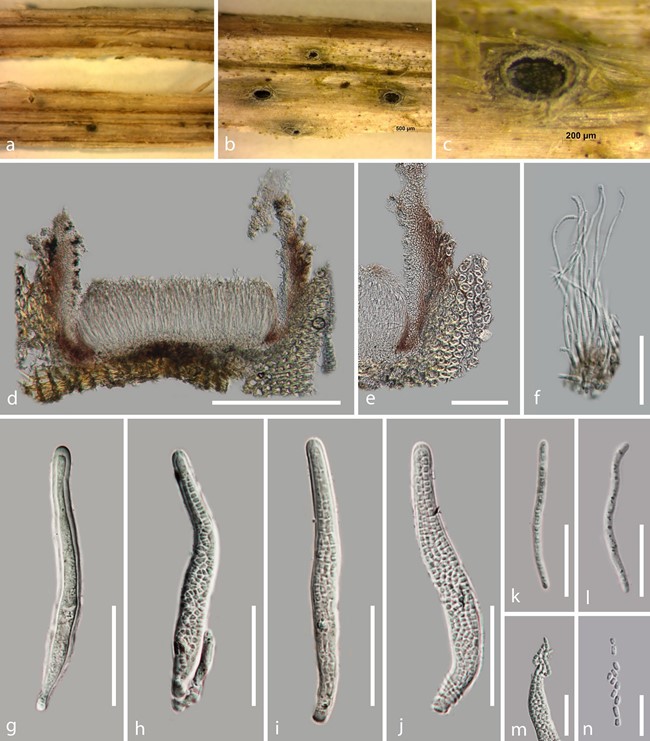Neostictis Ekanayaka, Camporesi & K.D. Hyde, gen. nov.
Index Fungorum number: IF557307; Facesoffungi number: FoF 07338, Fig. 92.
Etymology: Name refers to the similarity to Stictis.
Saprobic on decaying wood material or herbaceous plant in terrestrial habitats.
Sexual morph: Apothecia arising sin- gly or in small groups, sessile, immersed in substrate, under the clypeus, cupulate. Hypothecium convex. Disc blackish. Margins brownish. Hymenium hyaline, enclosed in a thick gelatinous matrix. Excipulum composed of multi-layer of cells of textura intricata. Paraphyses numerous, filiform, aseptate. Asci 8-spored, short sessile, broad cylindrical to oblong, rounded at the apex. Ascospores fasciculate, thread- like, spiraled, filiform, rounded ends, multi-septate, trans- versely eusepta, hyaline, sometimes breaking into small fragments.
Asexual morph: Undetermined.
Type species: Neostictis nigricans Ekanayaka, Phukhams., Camporesi & K.D. Hyde
Notes: – Our collection MFLU 17–1540, from Italy, formed a well-supported clade close to Phacidiella podocarpi. Our new species is morphologically similar to Fitzroyomyces cyperacearum by having immersed apothecia, long cylindri- cal asci and filiform ascospores (Crous et al. 2017). However, our new species differs by having blackish margins, smaller disc and asci and ascospores (Fig. 92). The ascospores of our collection failed to germinate and therefore, we were unable to compare the asexual morph characters of our collection with Fitzroyomyces cyperi and Phacidiella podocarpi.

Fig. 92 Neostictis nigricans (MFLU 17–1540, holotype). a Appear- ance of apothecia on Clematis vitalba. b, c Close up of apothecia on substrate. d Vertical section of an apothecia. e Vertical sec- tion of the peridium. f Aseptate paraphyses. g–j Asci. k, l Needle- like ascospores. m Ascospores released from an ascus. n Second- ary ascospores. Scale bars: b = 500 µm, c = 200 µm, d = 300 µm, e = 100 µm, f–j = 30 µm, k–n = 20 µm
Species
